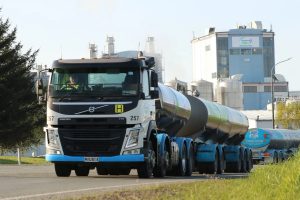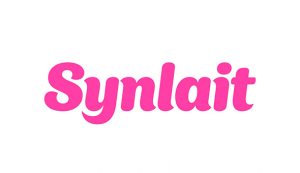
There’s no discussion on Ivan and Denise Hoppers’ farm near Invercargill about going 16-hour milking, or three-in-two, or even ten-in-seven.
Instead it’s left for their 360 cows to decide.
And with autumn here, the cows are enjoying a longer lie-in and don’t get up until dawn to walk to what used to be a 30-aside herringbone but now houses five DeLaval robots.
“There is always a period between about three and five in the morning when the cows don’t come in. They must be sleeping,” Denise said.
“But with the sun coming up later in autumn, that becomes six and then seven in the morning.”
And Denise and Ivan enjoy the sleep-in too, although they get to sleep in every morning. Since they installed the robots four years ago life has changed pace for them.
“Robots aren’t for everyone,” Ivan said. “You don’t shut the cows in the paddock after morning milking at seven and then don’t think about them until you need to get them in for the afternoon milking.
“Instead there is always something happening. There are always cows walking to and from the dairy, there are always cows getting milked and paddock gates shifting over. It doesn’t stop.”
The couple and their kids moved from the Waikato to buy the 126-hectare farm at Woodlands in 2007. Ivan was from a dairy farming family and has milked all his life.
“With the robotic calf feeder, it’s still hands on. You still spend a couple of hours every day with the calves,” Denise said.
“But you can get the kids off to school and then go see the calves. You do it when you want to. You don’t have to fit your day around feeding calves.”
Through the calf feeder they also got to know DeLaval Southern rep Mark McMillan, of Southland Farm Services and when Ivan walked into his office and said “we might be interested in milking robots”, Mark already knew they were the right couple to take it on.
“It was also the perfect timing for us because we were really interested in installing them for the first time,” Mark said.
“It’s not about selling as many robots as we can for us, it’s making sure they’re the right fit for people.
“We don’t want people buying them because they think they can then give up farming and go fishing all day. It’s not like that at all.”
For Ivan and Denise, it also meant they could continue farming without employing staff as milking was taking its toll on their bodies.
The cows were dried off at the start of May with the robots ready to be installed. The herringbone was gutted in a week.
“There was no going back then,” Denise said.
With the dairy in the centre of the farm it made sense to use the infrastructure already there.
The cost of the whole changeover was comparable to a full specification 54-bail rotary at the time, Mark said.
“Everyone put in 100%. Everyone from the builders to the plumbers to the electricians wanted to make it work.”
Calving started early August and on August 10 the first cow was milked by the robots. Denise and Ivan were there full-time pushing cows towards the robots and watching them get used to the paddocks changing over.
“Then about mid-September we thought we’d go have breakfast together and when we came back we realised the cows had it figured out. We were making it worse being there,” Denise said.
“So we left them to it.”
They still have to train heifers each spring but with the DeLaval robots, the cows can still be hand-cupped if needed.
A robotic arm washes each teat, which also stimulates milk flow, before attaching the cups one at a time. It takes between six and eight minutes for each milking while the cow chows down on a grain and mineral mix.
Then it’s back to the next paddock allocated with the gates switching over as Ivan and Denise have programmed them.
“It’s funny to watch the cows push a heifer through the gate to see which way it goes, whether it goes back to the paddock it’s come from or the gates have changed and there is a new paddock. They’re intelligent animals.”
Instead of cupping cows, the couple can now concentrate on putting up electric fences as needed, pasture maintenance and animal health.
“The enjoyable parts of farming,” Ivan said.
And the chilled-out cows are producing more than ever. The farm average before the robots on an all-grass system was 155,000kg milksolids (MS) and now it’s 180,000kg MS.
“We did use grain one year when we were milking and we got to 164,000kg so it’s still a lot more with the robots,” Ivan said.
In the spring, the top cows are coming in to be milked three times a day and on average, through the whole season, the cows are milking 2.3 times a day and the heifers 1.7 times a day.
“It could be the heifers are milking less because they get pushed out of the way by the cows, but it means their body condition score is always great. The heifers always seem to hang out together and come in for milking together.”
And for Ivan, there’s less topping of paddocks to do with paddocks evenly grazed. The robots check for somatic cells and draft out animals which may have mastitis. A DeLaval camera checks body condition scores and lameness is spotted with cows not wanting to leave the paddock. The DeLaval robots handle cows with oddly spaced teats well and, for a season, a cow with only two teats was milking successfully.
“She was still doing 30 litres a day so we kept her going,” Denise said.
However, the Allflex collars they use for heat detection needs a separate gate to draft them for AI.
“If all the systems talked to each other it would be so much easier,” she said.
There are instructions on the vat for the Fonterra tanker driver and a buffer vat for milk to go into while the main vat is being emptied and washed. When things go wrong, they receive an alert on their phone and if one robot isn’t working the others can easily handle the cows until it gets fixed.
“Ivan is pretty good at pulling things apart and putting them back together the rare times it’s needed and the software is bulletproof,” Mark said.
It means the Hoppers can leave the farm whenever they want for the day and for longer with their relief milker checking the system on her phone.
“You still have to hose the yard down and change gates over and check everything,” Ivan said.
As well, Denise spends about 15 minutes every day watching the data coming in from the robots.
Cows are progressively dried off towards the end of May with late calvers and empties still milking into June.
The cows are wintered on fodder beet and kale on the farm although Ivan and Denise haven’t decided against a wintering barn yet which could mean they would milk year-round.
After three years, they’re losing their vet, Tom Essink of VetSouth based in Winton, who is returning home to Holland.
His only robotic farm, Tom said he’d been impressed with how much data the robots gave on individual cows.
“It’s a much more relaxed way to milk cows as well. The cows certainly seem to enjoy it. And Ivan and Denise really love their cows so to see the cows happy makes them happy as well,” he said.
From the paddock to the robots
After more than a decade since its introduction, DeLaval’s farm management support systems for Asia and Pacific Graham Hardy believes robotic milking’s time is still to come in New Zealand. However, there needed to be a shift in attitude first.
“Originally, robotic milking was designed for European family farms with housed cows, not our pasture-based systems and although we have adapted it to work for cows on pasture, there is still that perception that it’s not profitable,” Graham said.
“It all falls into the level of proper management and cow performance to make the system work.”
As well, farmers with robots had to get used to cows moving when they wanted to.
“We created the concept of three-way grazing, where the daily grazing area is divided into three or even more areas to stimulate cow traffic through the robots.
“The cows want to come into the dairy to be milked because they know they will then go to a fresh paddock.
“But it means some cows still need to be fetched from paddocks so although most of the time the cows and robots need little help, someone still has to be on hand,” he said.
“There are many robotic pasture-based farmers that have managed to master these aspects and achieve voluntary cow traffic in grasslands operations very successfully.”
Herd sizes and the number of robots per cow were important, as well as the grazing area around the robotic dairy so cows did not have to walk too far to pasture.
“All these aspects are not a limiting factor to adopting robotic milking technology in grasslands operations, but they create a need to change, for the farmer, from the traditional grassland farming system that we currently operate in.”
Decreased labour requirements, more flexible work hours and less-repetitive work such as cupping cows which was hard on the body, as well as data gathering from each cow which enabled better farm management were all pluses with robotic milking, he said.
























